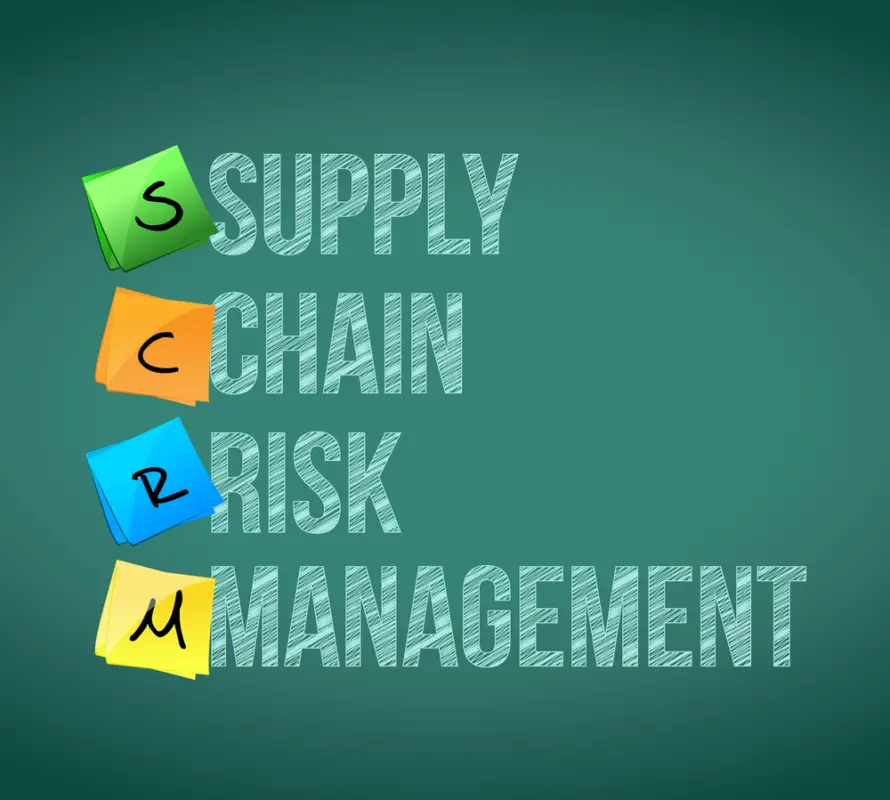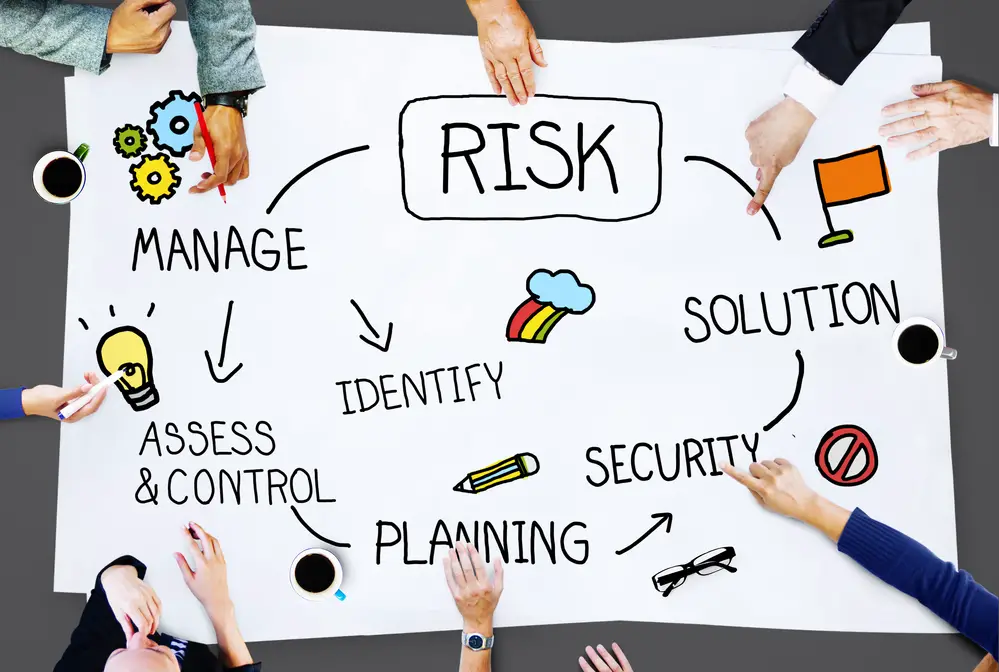In the digital age, businesses rely heavily on technology for their operations. That’s why it is essential for organizations to have a comprehensive cyber supply chain risk management plan in place to ensure operational continuity in the face of unexpected disruptions and cyber supply chain risks threats that may arise from within internal networks or external sources.
Managing the threat of cyberattacks should be an integral part of any business process. Vendor relationships or third-party suppliers pose significant risks to the entire business. Supply chain risk management is not the exclusive responsibility of IT departments. Both are a component of your business risk management framework, which must be developed depending on your risk tolerance level.
Unfortunately, these risks pose an added burden. According to the National Institute on Information Technologies, the risk of breaches within cyber-suppliers chains also increases.
Cyber Supply chain risk management, also called vendor risk management, consists of identifying, assessing and mitigating the risks associated with a product/service provider.
Organizations depend on suppliers to accomplish business objectives — this supplier handles sensitive data. Interconnected Supply chain ecosystem compromises continues to rise, and mitigation risks will require focused solutions in an effort to guarantee suppliers meet their commitments and avoid supply chain threats.
This blog post will provide an overview of key elements to consider when creating an effective cyber supply chain risk management plan and covers the entire life cycle of critical suppliers.
1. Assess Potential Risks
The first step in creating an effective cyber supply chain risk management plan is to assess potential risks that could arise from disruption within the network infrastructure or external sources.
This will involve investigating all areas of your IT infrastructure — such as hardware and software, cloud storage systems, server logs, routers, firewalls, antivirus programs and more — so that you can identify any existing vulnerabilities or potential threats. Also, the system development life cycle and distributed and interconnected nature of monitoring performance of systems.
2. Formulate Strategies
Once you have identified the potential risks associated with your networks and systems, it is time to formulate strategies for mitigating them. This involves developing plans for responding quickly and effectively if (or when) disruptions do occur.
Identify ways to avoid or reduce future threats through improved security protocols or implement additional measures such as whitelisting authorized applications or imposing authentication procedures for access control.
3. Implement Strategies
Once your strategies are developed, it is important to take steps to ensure they are implemented throughout the organization — including staff training and communication systems — so that everyone is prepared for potential risks that may arise within the cyber supply chain.
Additionally, systems should be monitored regularly so that emerging issues can be detected early on before they become more serious problems down the line.
4. Reevaluation
It’s also essential for organizations to regularly review their cyber supply chain risk management plans so that they can remain up-to-date with current technologies and potential threats facing their networks and IT infrastructures over time.

What is cyber supply chain management?
Cyber Supply Chain Risk Management assesses and mitigates risks associated with information technology products or solutions supply chains. The C-SCRM can (and should) be applied to hardware and software.
Because supply chain risks can harm a supplier at all stages of its existence (think of your product getting hacked by an unauthorised third party due to its vulnerabilities or a lack of security). Supply chain management is also critical to product development, production or sale.
Remember: C-SCRM is not just an IT problem
Cybersecurity doesn’t separate physical security from cybersecurity. IT security teams are responsible for cyber supply chains that affect every element of an organisation. Risk comes from several sources, from physical sabotage to digital risk to (most frequently) human error. You’ll lose important information when concentrating only on digital security.
Assume it will happen
Nobody is willing to think there’ll be breaches, but the idea that they’re inevitable can help you assess how much a breach has affected a system. Once you understand how badly this might affect your business, then you can understand the consequences of preventing repercussions.
Your C-SCRM program should be organization-wide
CSMR is not merely an IT issue and should never focus on one department. All people must take responsibility for their own safety. Effective IT SCRM is an organisation-wide activity which affects everyone within a business group.
Know your risks and threats
If you are unaware of the risks of an attack, it becomes harder to plan the right actions. List all possible scenarios causing damage in the supply chains and work out all the possible and most impactful scenarios.
Know your critical systems
When we know what systems need protection, we can determine what actions we should take to ensure they remain safe.

NIST Best Practices for Cyber Supply Chain Risk Management
NIST released the best practices in cyber-sales chain risk management in 2016, followed by a newer paper on key practices in cybersecurity supply chain management. NIST identified eight supply chain management risk issues to be considered in developing cyber supply chain risk management systems (C-SCRM).
A vendor must also implement and notify the customer about the best way to detect the vulnerabilities and ensure the long life of their product and services.
Loricca’s Cyber Supply Chain Risk Management Strategy
Despite this lack of confidence, most businesses have about 75% of the information they receive through Business Associates. Cyber security and resilience are critical elements when managing cyber security risk within supply chains.
Best Practices for Cyber Supply Chain Risk Management
The CSR program uses many different approaches. Best practices help in the identification and mitigation of risk. This practice also provides remedial steps in the case of data breaches. Here’s a list of good practices for cyber supply chain risk management.
Look at the entire landscape
The underlying security standards have been used for various cybersecurity strategies and best practices across the globe. Some of the most notable example examples are NIST’s cybersecurity framework (CCSF), the Center for Information and Privacy Control and the ISO series.
The C-SCRM must comply with all the standards set out in the third-party program for risk reduction. It has become very crucial to the moment where outsourcers are prevalent. You must remember that you can only trust your data protection system with your most vulnerable third-party provider.
Set Minimum Security Requirements for Your Suppliers
The minimum security standards should also be defined, and the metrics should also be reasonable and achievable. Make sure these guidelines reflect your assessment of security risks and your vendor’s maturity with respect to their security systems and capability to fulfil your requirements.
Ensure minimal requirement documentation can be standardised to improve enforcement. It is possible to reduce time and make the parties do less.
Encourage continuous improvement of security within your supply chain
Encourage your vendors to constantly improve your security measures to help you compete and win contracts with your vendors. Advising the supplier on these enhancements. Provide the best possible time and provide a timeline and plan of action for your project.
Listen to the performance monitoring incidents or bottom-up supplier reports if these reports show how poorly the current approach is working.
Understand the security risks posed by your supply chain
Examine the specific risks posed by your supplier and its products and services. Risks to supply chains can vary greatly by type or dimension. The supplier may not be adequately secured, might be a hostile source, or the employees cannot manage your information properly.
Collect enough data for better evaluation of security concerns, such as insider data collection and risk analysis.
Develop Organizational Defenses With “Assume Breach” in Mind
If an organization suspects a breach has already occurred, it can assess how the security posture is affected. The premise is that an internal network will be as open and accessible as the Internet will alert the system to various threats.
Cybersecurity is a People Process and Technology Problem
People, processes, and technology combine to solve problems. Supply Chain Management focuses on the above three areas to improve supply chain performance and increase the security and efficiency of the supply chain.
Cyber supply chain principles and supply chain risks
The National Institute on Standards & Technology defines the key principles for achieving CSCRM. This consideration is extensive and broad in relation to critical infrastructure, business systems, and Intellectual Property.
Conclusion
Taking steps now to create an effective Cyber Supply Chain Risk Management Plan can go a long way towards helping organizations protect themselves against unexpected disruptions while ensuring optimal operational efficiency over time; by assessing potential risks, formulating strategies and steps for mitigating them, implementing necessary protocols across their organizations, and reevaluating their plans periodically — businesses can be better prepared for any unforeseen disasters or interruptions that may arise in their operations down the line.

Chris Ekai is a Risk Management expert with over 10 years of experience in the field. He has a Master’s(MSc) degree in Risk Management from University of Portsmouth and is a CPA and Finance professional. He currently works as a Content Manager at Risk Publishing, writing about Enterprise Risk Management, Business Continuity Management and Project Management.


